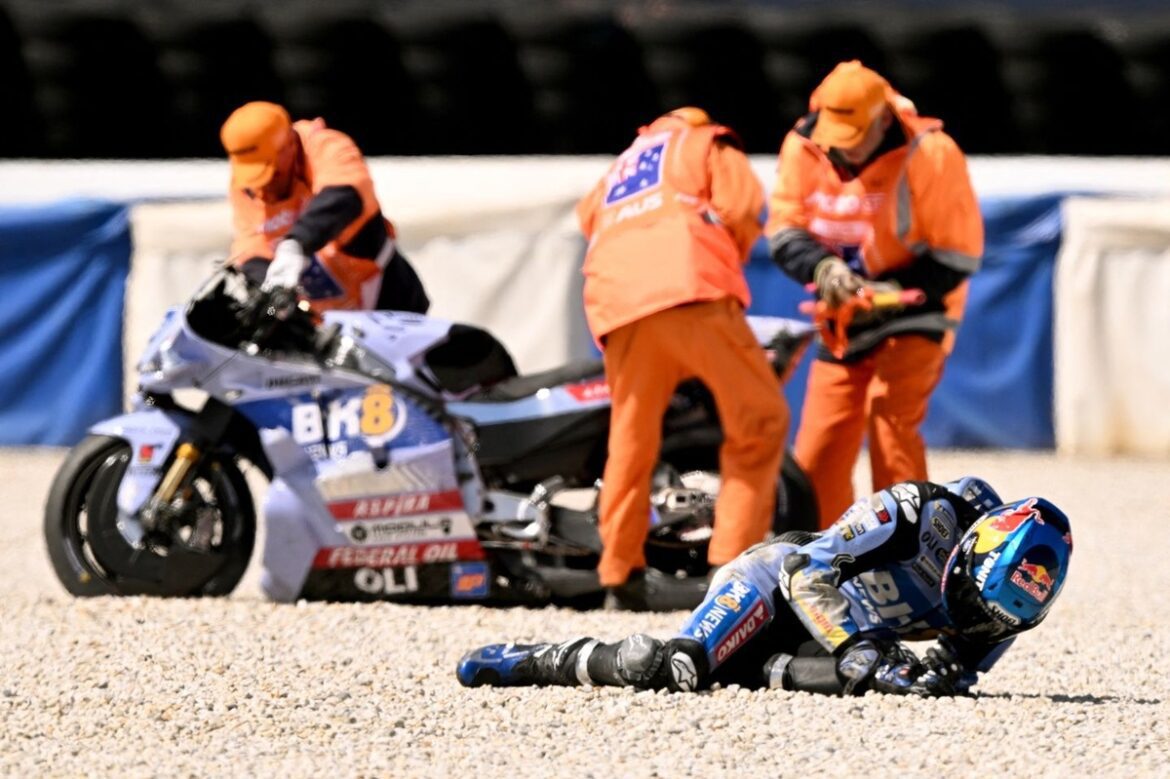Changes in MotoGP Regulations: Enhancing Safety and Fairness
The world of MotoGP continuously evolves, with regulations being adjusted to improve safety and fairness for all competitors. Recently, the governing body announced significant changes designed to minimize disruptions caused by late yellow flags during timed sessions. These regulations will take effect at the upcoming Malaysian Grand Prix, marking a pivotal moment in how qualifying sessions are conducted.
New Rules for Late Qualifying Sessions
Under the newly introduced rules, riders who fall during the last three minutes of qualifying sessions will not be allowed to rejoin the sessions. This regulation applies equally to the Friday afternoon practice sessions, which play a crucial role in determining which riders advance directly to Qualifying 2 on Saturday. The aim is to streamline the process and reduce the risk of prolonged yellow flags that can adversely affect other riders’ performance.
This change comes in response to incidents like the one involving Alex Rins during the recent Mandalika event, where his crash late in the qualifying session led to extended yellow flag conditions. His continued presence in the gravel trap interrupted the flow of the session, impacting the performance of his competitors. By implementing this new rule, MotoGP seeks to create a more equitable environment where riders can perform without the unexpected disruptions caused by others’ crashes.
The Impact of Yellow Flags on Performance
Yellow flags are a common occurrence in MotoGP, often resulting from crashes or incidents on the track. When a yellow flag is displayed, riders must slow down and exercise caution. This can be particularly frustrating for those on fast laps, as a sudden yellow flag can ruin their chances of achieving a competitive time. By limiting the ability of riders to re-enter the session after a fall in the closing minutes, the new regulation aims to minimize these interruptions and maintain the integrity of the qualifying process.
While the intention behind this change is clear, its implementation may present challenges. The interpretation of the rules and how they are enforced could lead to debates among teams and riders, potentially sparking controversy. Nevertheless, the overarching goal remains to enhance safety and fairness in the sport.
Additional Safety Measures
In addition to the yellow flag regulations, MotoGP has introduced other adjustments aimed at improving safety on the track. One such change prohibits riders from warming up their tires by zig-zagging in the pit lane. This practice, while common, has been deemed unsafe, prompting officials to take action.
Factory Yamaha rider Fabio Quartararo commented on this new rule, expressing that breaking the long-standing habit of zig-zagging could prove challenging. He acknowledged that while he has engaged in this routine for the past 15 years without incident, the decision to ban it could have valid reasoning. The goal of such regulations is to prevent accidents and enhance overall safety for both riders and crew members in the pit lane.
Indicating Intentions to Pit
Another safety enhancement involves a new requirement for riders to signal their intention to pit. This will be done through a leg signal, ensuring that other competitors and team members are aware of a rider’s plans. Effective communication on the track is crucial, and this rule aims to reduce the likelihood of accidents occurring in the pit area.
Response from the Riders
The response from riders regarding these regulatory changes has been mixed. While some, like Quartararo, acknowledge the need for safety measures, others may find the adjustments challenging to adapt to. The evolution of regulations in MotoGP often sparks discussions among competitors, who must balance their instincts and routines with the new rules set forth by the governing body.
The Road Ahead for MotoGP
As MotoGP continues to evolve, the introduction of these new regulations is a testament to the sport’s commitment to safety and fairness. By addressing the issues surrounding late yellow flags and improving communication in the pit area, MotoGP aims to create a more level playing field for all competitors.
The upcoming Malaysian Grand Prix will serve as a benchmark for how these regulations are received and implemented. As teams and riders adapt to the changes, the focus will remain on ensuring a safe and competitive environment that enhances the thrilling spectacle of MotoGP racing.
In conclusion, the recent regulatory adjustments in MotoGP reflect a proactive approach to addressing safety concerns and improving the overall racing experience. As the sport continues to navigate the complexities of competition, these changes are a step toward a safer and fairer environment for all participants.
